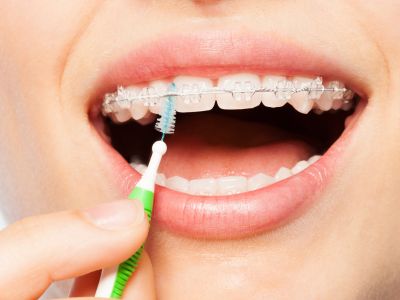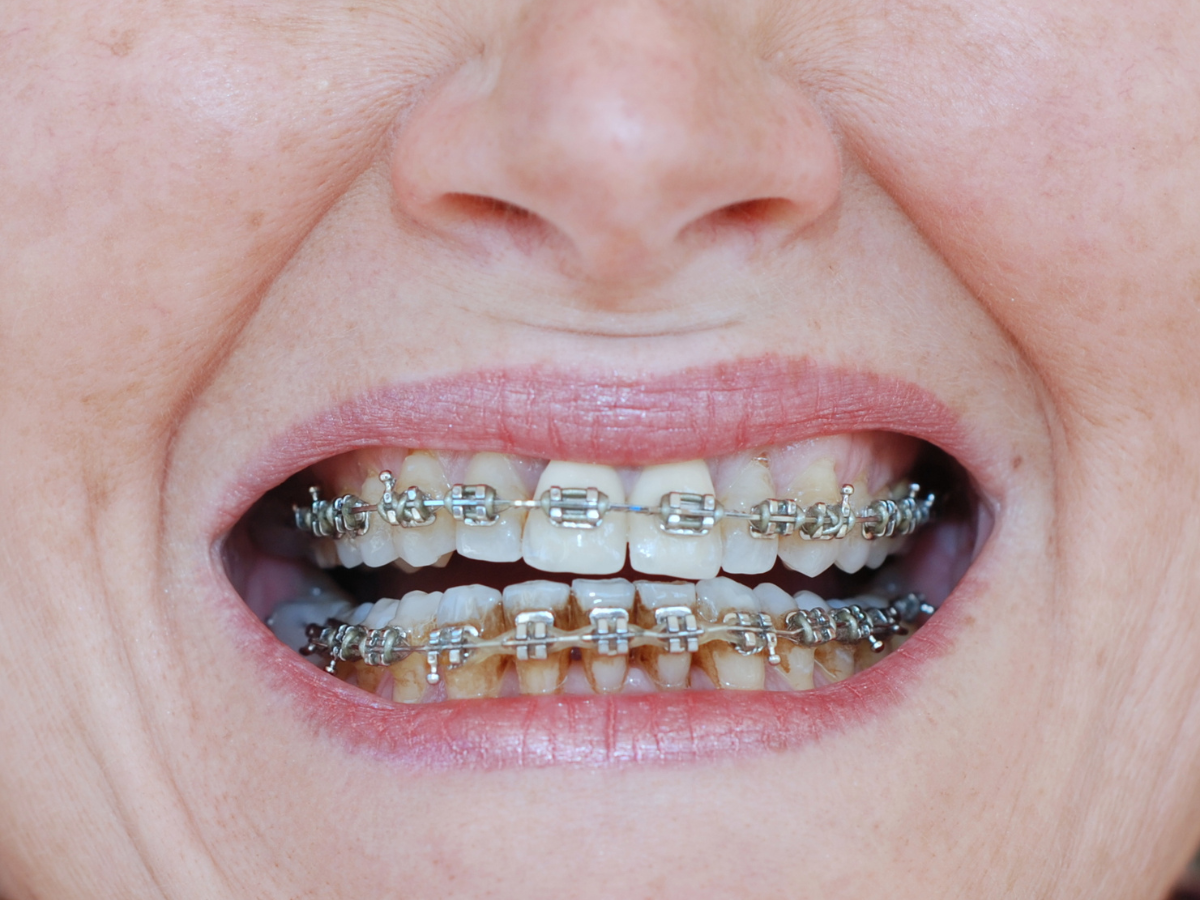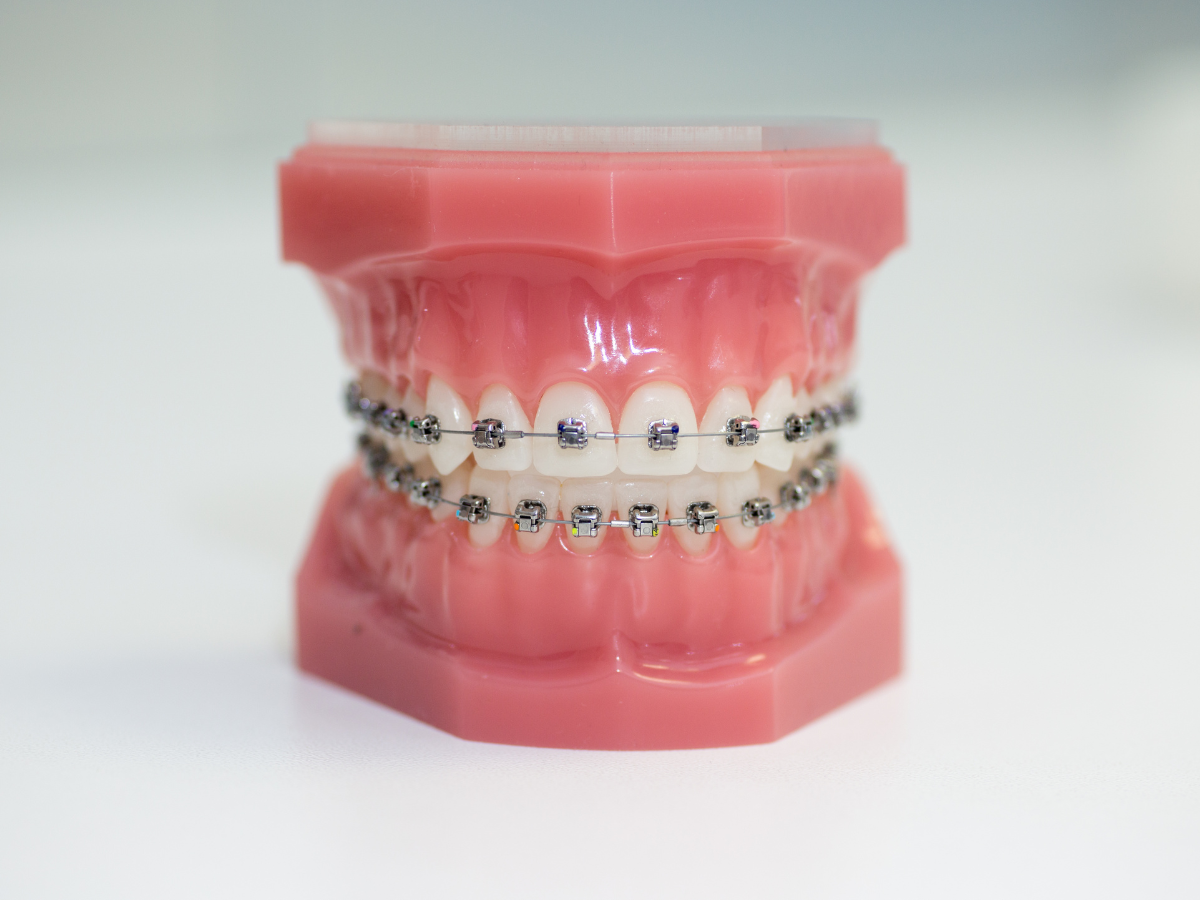When it comes to achieving a straighter smile, braces have long been a reliable solution. However, with advancements in orthodontic technology, individuals now have more choices than ever before. Two popular options that often come up in discussions with orthodontists are ceramic braces and metal braces. In this blog, we’ll explore the differences between ceramic and metal braces to help you make an informed decision about which orthodontic treatment is best for you.
Ceramic Braces vs Metal Braces the Basics
Metal Braces:
- Traditional and widely used for decades.
- Composed of high-quality stainless steel.
- Consists of metal brackets attached to each tooth with a wire running through them.
- Known for their durability and effectiveness.
Ceramic Braces:
- A more discreet alternative to metal braces.
- Made from clear or tooth-colored materials like ceramic or porcelain.
- Feature brackets and wires, similar to metal braces, but blend in with the natural color of your teeth.
- Preferred by those seeking a less noticeable orthodontic solution.
Ceramic Braces: A Closer Look
1. Aesthetic Appeal:
Ceramic braces are favored for their ability to blend in with the natural color of the teeth, making them a more aesthetically pleasing option for individuals conscious of their appearance during orthodontic treatment.
They are available in clear or tooth-colored materials, making them less conspicuous than traditional metal braces, especially from a distance.
2. Material Composition:
Ceramic braces are typically made from porcelain or other composite materials. These materials are selected for their durability and resistance to staining.
The use of advanced ceramics ensures that the braces remain strong and effective throughout the treatment process.
3. Staining Concerns:
While ceramic braces are designed to resist staining, wearers need to be cautious about certain foods and drinks that may cause discoloration.
Orthodontists may recommend avoiding dark-colored foods, beverages, and tobacco products to maintain the braces’ clarity.
4. Comfort Factor:
Many users report that ceramic braces offer a smooth and comfortable feel due to their rounded edges, which can minimize irritation to the cheeks and lips.
The brackets are designed to be gentler on the soft tissues of the mouth, providing a more comfortable experience for the wearer.
5. Suitability for All Cases:
Ceramic braces are suitable for a wide range of orthodontic issues, including mild to moderate misalignments. However, they may not be recommended for more complex cases where additional strength is required.

Metal Braces: A Comprehensive Overview
1. Durability and Strength:
Metal braces have long been the go-to option for orthodontic treatment due to their unmatched durability and strength.
They are particularly effective in addressing severe misalignments and complex dental issues, making them a reliable choice for a wide range of patients.
2. Affordability:
Metal braces are often more cost-effective than their ceramic counterparts. This makes them a popular choice for individuals who prioritize budget considerations in their orthodontic decision-making process.
Many insurance plans also cover the cost of metal braces, making them a financially feasible option for a broader demographic.
3. Treatment Time:
Metal braces are known for their efficiency in achieving desired results within a relatively shorter time frame.
The robust nature of metal allows for more substantial adjustments, facilitating quicker progress in the alignment of the teeth.
4. Customization Options:
While the basic components of metal braces remain consistent, wearers can personalize their appearance by selecting colored bands for the brackets. This customization option can be appealing, especially for younger patients who enjoy expressing their individuality.
5. Low Maintenance:
Metal braces are low-maintenance and easy to care for. Regular brushing and flossing, along with routine orthodontic visits, contribute to the overall success of the treatment.
The durability of metal braces means they are less prone to breakage, reducing the need for emergency visits to the orthodontist.

Choosing the Right Option for You
Ultimately, the choice between ceramic and metal braces depends on your individual preferences, lifestyle, and specific orthodontic needs. Consulting with an experienced orthodontist is crucial for receiving personalized advice tailored to your unique situation. Whether you opt for the discreet aesthetic of ceramic braces or the reliability of traditional metal braces, both options are effective in helping you achieve a beautifully aligned smile.
Appearance
One of the primary considerations when choosing between ceramic and metal braces is the appearance. Metal braces are noticeable due to their shiny silver color, which some people find less aesthetically pleasing. On the other hand, ceramic braces are designed to be less conspicuous, as they blend in with the natural color of your teeth. This makes them a popular choice for individuals who want a more discreet orthodontic option.
Durability
Metal braces are renowned for their durability and strength. They can withstand a significant amount of pressure, making them effective for a wide range of orthodontic issues. Ceramic braces, while strong, may be slightly more prone to breakage than their metal counterparts. Orthodontic patients considering ceramic braces should be mindful of their lifestyle and potential impact on the braces.
Cost Considerations
Cost is a crucial factor for many individuals when deciding between ceramic and metal braces. In general, ceramic braces tend to be more expensive than metal braces. The higher cost is attributed to the materials used and the desire for a less conspicuous appearance. Patients should discuss their budget and insurance coverage with their orthodontist to determine the most financially viable option for them.
Comfort
Both ceramic and metal braces can cause some discomfort initially as the teeth adjust to the pressure applied. However, many patients find that discomfort decreases over time. Some individuals claim that ceramic braces are slightly more comfortable due to their smoother edges compared to the metal brackets. Ultimately, personal experiences with comfort may vary.
Maintenance
Proper maintenance is crucial for the success of any orthodontic treatment. Metal braces are known for their ease of maintenance and durability. Ceramic braces, while still relatively easy to care for, may require a bit more attention to prevent staining. Patients with ceramic braces should be mindful of their diet and oral hygiene practices to keep their braces looking clean and inconspicuous.
Conclusion
Choosing between ceramic and metal braces ultimately depends on individual preferences, lifestyle, and budget. While ceramic braces offer a more discreet option, metal braces remain a reliable and cost-effective choice for many. Consulting with an experienced orthodontist is the best way to determine which option aligns with your specific needs and goals for achieving a straighter, healthier smile. Remember, the goal of both ceramic and metal braces is the same – to give you a smile you can confidently share with the world.


